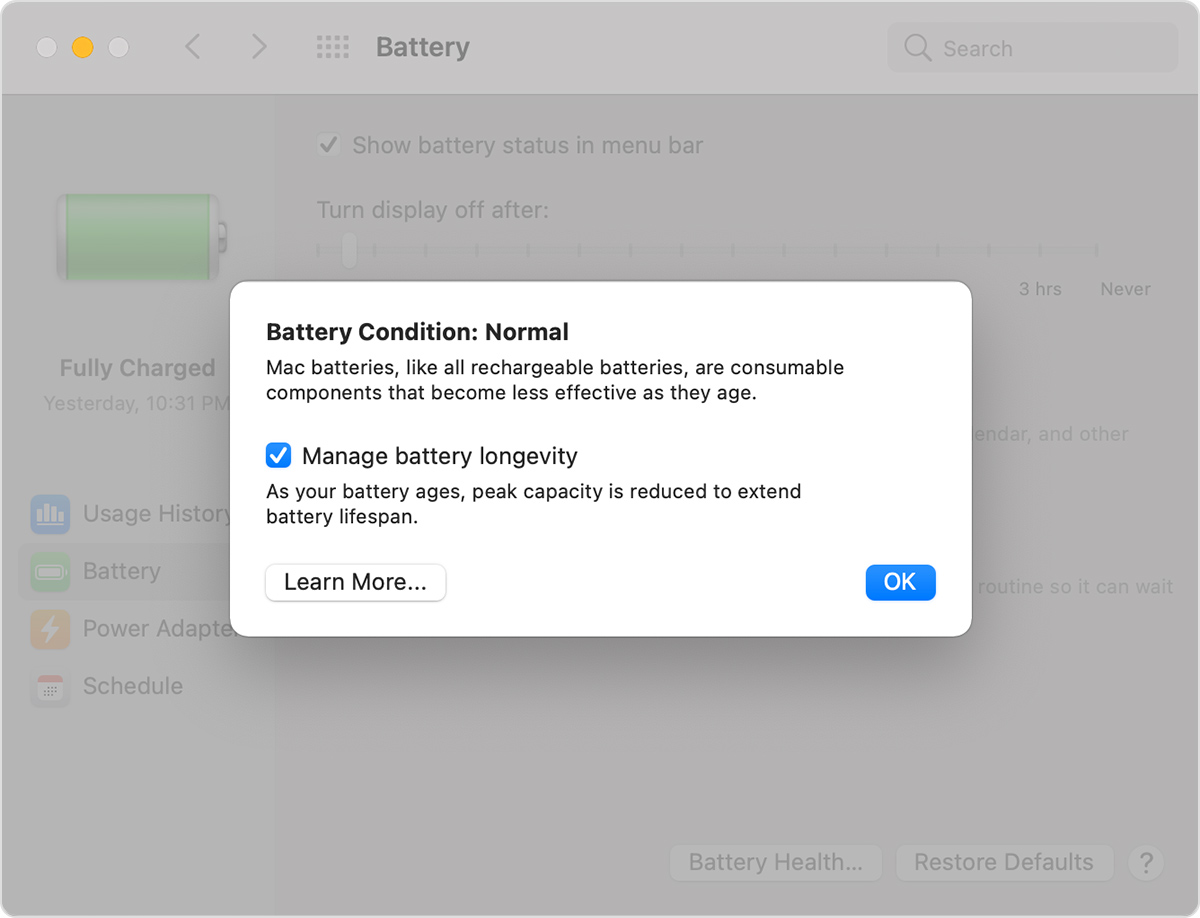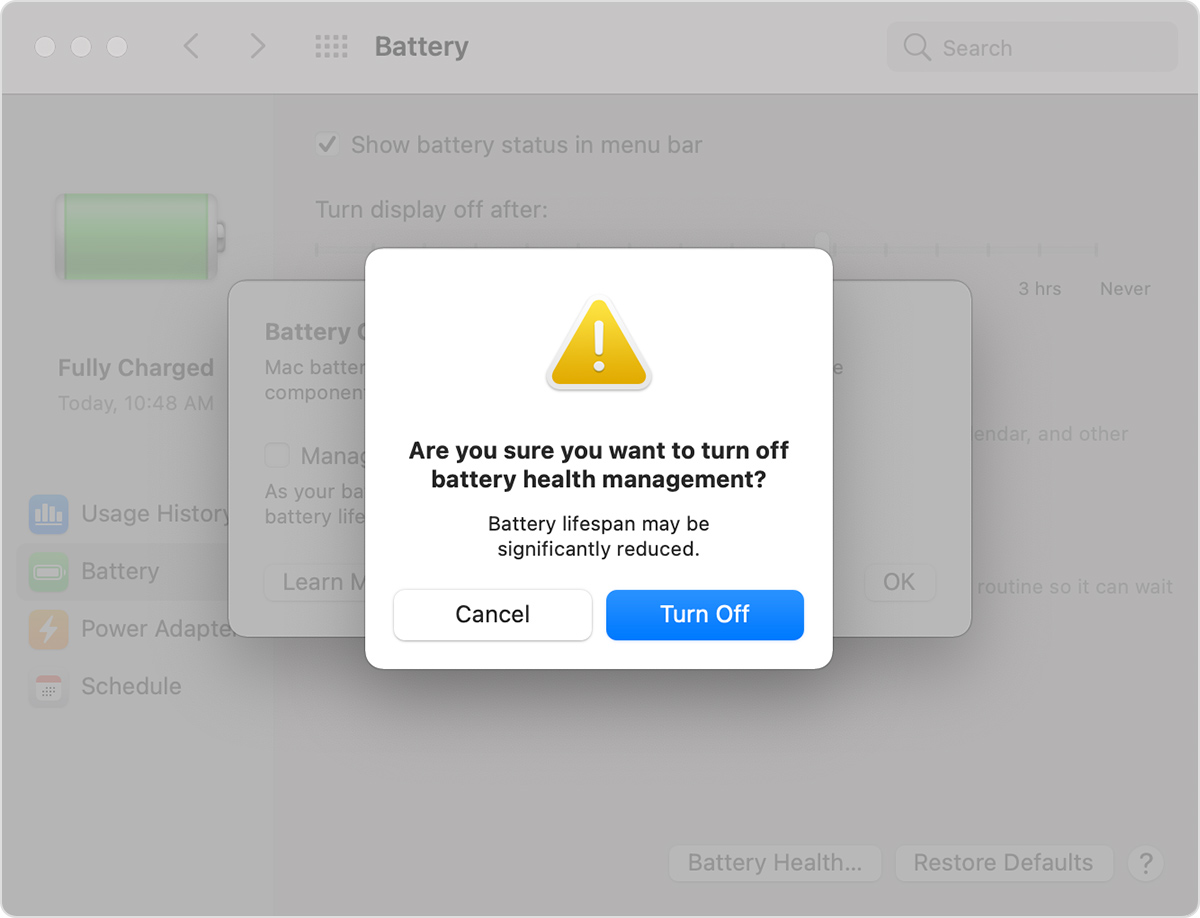About battery health management in Mac laptops
Mac laptop computers with an Intel processor use battery health management, a feature designed to improve the lifespan of your computer's battery.
This article applies only to Mac computers with an Intel processor.
About the lithium-ion battery in your Mac laptop
Mac laptop batteries use lithium-ion technology. Lithium-ion batteries charge quickly, are long-lasting, and currently provide the best technology to power your computer.
All rechargeable batteries are consumable components that become less effective as they get older—and their age isn't determined only by time. A battery's lifespan depends on its chemical age, which is affected by factors such as its temperature history and charging pattern. As your laptop's battery ages chemically, its charging capacity gets smaller.
How to control the battery health management feature
Battery health management is on by default when you buy a new Mac laptop with macOS 10.15.5 or later, or after you upgrade to macOS 10.15.5 or later on a Mac laptop with Thunderbolt 3 ports.
If you want to turn off battery health management on a Mac laptop with an Intel processor, follow these steps:
Choose System Settings (or Preferences) from the Apple menu .
Click Battery in the sidebar.
Click Battery Health.
Deselect "Manage battery longevity".

Click Turn Off.
Click OK.

Note that turning this feature off might reduce your battery's lifespan.
How battery health management helps
The battery health management feature in macOS 10.15.5 monitors your battery's temperature history and its charging patterns, improving your battery's lifespan by reducing the rate at which it chemically ages.
Based on the measurements that it collects, battery health management may reduce your battery's maximum charge when in this mode. This happens as needed to ensure that your battery charges to a level that's optimized for your usage—reducing wear on the battery, and slowing its chemical aging. Battery health management also uses the measurements to calculate when your battery needs service.
While battery health management benefits your battery's long-term lifespan, it can also reduce the amount of time your Mac runs on one battery charge when capacity limits are applied. If your priority is making your Mac laptop last as long as possible before recharging, you can turn the feature off.
When battery health management is turned on, your battery's maximum charging capacity might be limited. Although the feature is designed to improve your battery's lifespan, the limited maximum capacity might update your battery status menu to indicate a need for service. Your Mac calculates when to recommend service for your battery based on battery health management being continuously enabled.
Learn more
Maximizing battery life and lifespan
Get service for your Mac laptop.